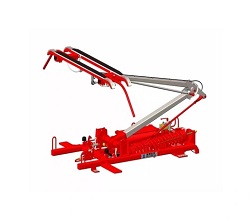𐄀 Technology Connection to Future

In the expansive landscape of rail transport, the pantograph stands as a critical component, embodying a fascinating working principle that ensures the efficient and precise supply of power to trains. Yonggui Electric will unravel the intricacies of the pantograph working principle and its integral role in the functioning of the railway system.
At the heart of overhead electrification in railways lies the pantograph, a device that facilitates the seamless transfer of electrical power from overhead lines to the train. The working principle of the railway pantograph involves a dynamic interplay of mechanical components that enable it to maintain continuous contact with the overhead wires while the train is in motion.
Central to the pantograph working principle is its interaction with the overhead wires, known as contact wires. The pantograph comprises a set of arms equipped with contact strips that make consistent contact with the energized wires. This dynamic connection allows the transfer of electrical power to the train, ensuring a stable and uninterrupted power supply during its journey.
The pantograph operates on a delicate balancing act, adapting to the variations in the height and position of the overhead wires. The mechanical linkage system within the pantograph allows it to adjust its height and angle, ensuring continuous contact with the wires even when navigating curves, inclines, or declines. This adaptability is crucial for maintaining a consistent and reliable power supply to the train.
Advancements in material technology have played a pivotal role in enhancing the efficiency of pantographs. Modern pantographs are often constructed with lightweight yet durable materials, contributing to reduced wear and tear on both the pantograph and the overhead wires. This innovation aligns with the broader goal of creating more sustainable and energy-efficient railway systems.
In conclusion, the pantograph working principle serves as the backbone of overhead electrification in railway systems, providing a reliable and efficient means of powering trains. Its intricate mechanism, dynamic interaction with contact wires, ability to adapt to varying conditions, and integration of innovative materials collectively contribute to the precision and effectiveness of rail transport. As railway technology continues to evolve, the pantograph working principle remains a testament to the engineering ingenuity dedicated to achieving optimal performance and sustainability in rail systems.